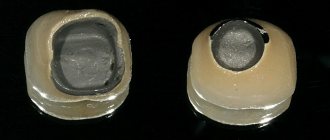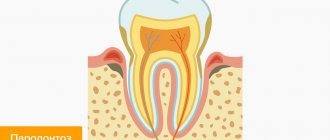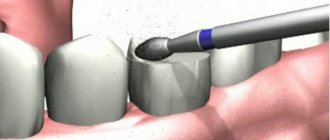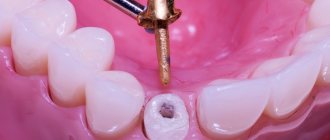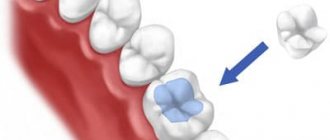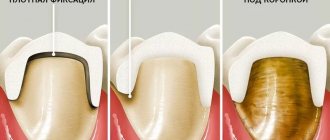Surgical set
Contains all the necessary tools to install all types of ADIN dental implant systems.
Introduction
ADIN Dental Implant Systems offers a wide range of high quality implants that offer improved bone loading, short healing times, good function, strength, and durability. The special design and design ensures load distribution and makes it possible to use implants in most areas of tooth loss in both the lower and upper jaw bones.
Bone Density Classification
Indications
Can be used for single tooth transplant, row teeth, bridges, orthodontic procedures, immediate loading.
Sequence of surgery
Preoperative preparation includes:
- Clinical bone analysis
- Making models and using the articulator
- X-ray and CT
- Using Surgical Guides
- Selecting the appropriate surgical approach (dissection)
Osteotomy
(two-step procedure)
Preoperative preparation includes:
- The dissection should be made directly through the soft tissue, including the periosteum, to the bone.
- Flap elevation
- Marking the location for the implant
- Drilling with a pilot cutter to the full depth of the selected implant.
- The width of the forming drill depends on the required diameter of the implants (see diagram).
- Insertion of the implant (using a ratchet or manually).
- Removing the Implant Driver
- Cover screw
One-step procedure
- Remove soft tissue using a mucotome
- Drilling
- Implant insertion
- Healing former: abutment and crown, spherical attachment.
Proper drilling reduces the risk of overheating and subsequent necrosis of the surrounding bone.
The ADIN implant system is designed for external irrigation. Drilling should be done without applying excessive pressure.
The recommended speed for bone types D3-D4 is about 400-500 rpm, for bone types D1-D2 - 600-800 rpm. It is preferable to use intermittent drilling with variable pressure for 1.2 seconds. The final placement of the TOUAREG and SWELL implants is preferably under the alveolar ridge (no more than 0.1) or at the level of the ridge.
Loads during implant installation
The implant is installed with a maximum load of 70N depending on bone density. The abutment is fixed with a force of 30N.
One-stage concept: philosophy, features and implantation protocol
The traditional method of replacing teeth using removable or bridge prostheses has its limitations and does not always provide the necessary quality of life. Therefore, the need for more durable and convenient solutions is more urgent today than ever before. The volume of implant procedures, as predicted, has increased markedly in recent years. According to research, the demand for the installation of orthopedic structures on implants should exceed the demand for all other types of dental care [1, 2].
According to leading consulting agency Morgan Stanley, market prices in the implant segment have decreased in recent years and so far no change in this trend is expected, which also contributes to the spread of this method [3].
In 2012, the European market for dental implants, abutments and computer-assisted surgery exceeded $1 billion (slightly more than the US). And its growth continues, especially in emerging markets. The market for dental implants and osteoplastic materials is the fastest growing segment in the field of dental technologies [4].
Dental implants are actively used in clinics around the world. And this forces us to look for simpler and more rational schemes for their use. At the same time, it is necessary to remain within the framework of surgical protocols of the operation, confirmed by clinical experience.
The development of the method is moving along the path of reducing injuries, reducing costs, reducing waiting times for the end of treatment and increasing the service life of structures.
It should be noted that the wishes of doctors and patients when surveyed about implant treatment largely coincide (Table No. 1).
Table No. 1. Expectations and requirements for dental implantation
What do patients want? | What do doctors need? | Coincidences |
| Painless | Easy to use | |
| Teeth faster | Short learning process | |
| Newest technologies | Use of new technologies | ? |
| High medical standards | High technical product standards | ? |
| Long lasting results | Health safety | |
| Aesthetics | High aesthetics | ? |
| Operation availability | Minimum cost | ? |
A promising direction is the use of a one-stage concept and monolithic implants, which have proven themselves well in world practice. They are often used as an alternative to the traditional protocol. Works devoted to this appear more and more frequently in the literature [5–13]. And today, almost all leading implantation systems have one-stage (monolithic) implants in their line.
Clinical philosophy of implantation
The indication for implantation is adentia in all its forms. And the list of contraindications has now been significantly reduced, many of them have become relative. If there are concomitant diseases that increase the risk of failure, we do not refuse implantation, but only warn about the possible consequences and recommend correction and observation by an appropriate specialist.
The ultimate goal of implantation is prosthetics - an orthopedic structure, i.e. new teeth for the patient. It is necessary to weigh everything and discuss various options with the patient.
The desire of some doctors to carry out implantation at all costs (sometimes removing teeth that are completely treatable for this purpose!) can only be explained by a lack of clinical experience.
An implant is just an artificial support for prosthetics and does not always have an advantage over natural supports.
And implantation itself is a means, not the goal of treatment. The desire to complicate the treatment plan is not always justified clinically, ethically and economically, and many patients perceive it as a simple desire of the doctor to make money [14]. And if complex treatment does not guarantee an aesthetic long-term end result, a simpler and more reliable path is preferable.
A little about design
It is interesting that the history of modern implantology began with one-stage implants. In the first half of the twentieth century, various materials and implant designs were used with extremely inconsistent results. Later, when various experiments moved on to practical use, the most popular material for implants became Vitallium, a dental cobalt-chromium alloy [15].
After numerous research works and the formulation of the theory of osseointegration, a breakthrough in the concept of titanium screw structures occurred [16–20]. The two-stage installation protocol and dismountable screw implants proposed by PI Branemark have become classics and are successfully used to this day. Non-screw implant designs (cylindrical, pyramidal, hollow, subperiosteal, blade-shaped, etc.) have gradually lost their importance and are now almost never used.
Today, the gold standard is the use of titanium screw implants. In addition to their traditional collapsible design, there are non-removable (monolithic, one-stage) implants.
A little about osseointegration
The main condition for the long-term functioning of dental implants is successful osseointegration. Its phenomenon has been studied in detail and described on titanium surfaces [20], although recently there has been an increase in the production of zirconium oxide implants, the surface of which, according to some data, is also characterized by osseointegration [21, 22].
Complete immobility after installation is the main condition for osseointegration of titanium implants. Otherwise, fibrointegration may occur, which does not guarantee long-term success [5, 15, 20, 23–26].
Therefore, mechanical retention immediately after installation (primary stabilization) should be maximum; it holds the implant until the completion of the osseointegration process (secondary stabilization) and is the key to its successful onset.
It should be noted that only titanium surfaces with a moderate degree of roughness (Ra > 2 µm; Rm < 10 µm) have proven effectiveness, and the existing variety of non-titanium surfaces do not have proven long-term success [26–31]. This can explain the constant search for the “secret” of the ideal surface and the regular change of its “philosophy” among various manufacturing companies.
Bioactive coatings on the intraosseous part of dental implants show good results in the short term, but have not been sufficiently tested in the long term. What happens after the resorption of surface coatings remains unclear [32–35].
Features of a one-stage surgical protocol
There are one-stage and two-stage surgical protocols for installing dental implants.
The two-step protocol is now the most popular. It is described in detail in the literature and consists of two operations separated in time: installation of the implant and its opening.
The one-stage protocol involves only one operation and transgingival healing. The second stage of the implantation operation - opening the implant - is excluded from the surgical part, and the extraosseous part (abutment, gum former) is positioned immediately during implant installation.
Both monolithic and dismountable implants can be installed in one stage. When installing classic dismountable implants using a one-stage protocol, the gum former or abutment is fixed immediately. At the same time, different systems may have differences in tactical recommendations and the sequence of instruments used, but in general, a one-stage surgical protocol is no different from a two-stage one.
When comparing the main characteristics of implantation protocols, we can conclude that the one-stage technique is a good alternative and is in many ways superior to the two-stage method (Table No. 2).
Table No. 2. Comparative characteristics of one-stage and two-stage implantation protocols
Some characteristics of implantation protocols | One-step protocol | Two-step protocol |
| Number of surgical steps/surgical instruments | + | — |
| Simplicity of the installation algorithm | + | — |
| Atraumatic | + | — |
| Operation duration | ? = ? | |
| Risks during healing | — | + |
| Number/complexity of manipulations during prosthetics | + | — |
| Time frame for complete rehabilitation | + | — |
| Cost-effectiveness of implantation | + | — |
One-stage implantation should not be confused with one-stage and mini-implantation.
Simultaneous implantation is the installation of an implant immediately after tooth extraction. It can be carried out using either a one-stage or two-stage protocol. This type of implantation is also called direct; it is very widely used today. It carries many additional risks and requires a highly qualified implantologist, since it almost always requires plastic surgery of soft tissues [36].
Mini-implants are small-diameter implants (up to 2.5 mm), which are installed in one stage and most often “bloodlessly”, i.e. without an incision (detachment of the flap). Unfortunately, this method of installation often leads to their loss due to “blindness” of positioning in the alveolar ridge [37–39]. Their small diameter is often insufficient for long-term loads, so their temporary use is more appropriate.
Design and features of one-stage implants
A one-stage implant has the same parts as a two-stage implant - intraosseous and abutment, but they are connected monolithically. This allows them to be installed more aggressively, allowing for bone spreading in difficult cases. They are actively used as an alternative for severe atrophy (narrow alveolar ridge), covering a larger number of clinical situations. This allows you to avoid bone grafting and thereby reduce the treatment time. Monolithic implants are less demanding on the quantity and quality of bone, but require much more attention during installation [5–13].
Functionally, a monolithic structure is much more reliable than a collapsible one. Here, problems such as unwinding of the abutment, fracture of the fixing screw or implant are excluded, and the very absence of a micro-gap at the connection site eliminates bacterial contamination and, as a consequence, the appearance of an unpleasant odor and the development of peri-implantitis [5, 7, 15, 23, 26, 36].
Single-stage implants typically have a root-shaped (tapered) shape and an aggressive thread design. This thread provides very high primary stability, and mathematical finite element analysis has shown that the distribution of chewing load is uniform over the entire surface area. Aggressive carving with a high profile height creates sufficient stability even in bone with a predominant cancellous structure (type D4 according to Leckholm/Zarb, 1985) until osseointegration occurs. In addition, this form of thread increases the contact surface area. The functional surface area of a 4.5 x 12.0 mm implant is approximately 220 mm? and corresponds to a cylinder of 5.8×12.0 mm.
Another feature is that the diameter of the formed bone hole is always significantly smaller than the diameter of the implant (for an implant ? 4.5 mm is only ? 3 mm), which allows such implants to be installed in a thinner alveolar ridge, producing a circular compaction and expansion of the bone by the implant itself during installation (autospreading). This helps avoid complex procedures such as bone grafting, with its often disappointing results. In this case, a monolithic implant is installed with the necessary force, without the risk of its fracture, even if this significantly exceeds 50 Ncm, the maximum allowable for all two-stage designs.
A characteristic difference between one-stage implants is a single orthopedic platform for all diameters. This makes it easier for the doctor to apply prosthetics and facilitates the work of the dental technician. Implants of different diameters differ only in the width of the abutment shoulder.
It should be noted that the cost of one-stage implantation is low and consists of a minimum set of consumables and surgical instruments. And making a crown on an implant is no more difficult than making a crown on your own tooth [41].
When prosthetics on one-stage implants, various types of structures can be used: fixed (crowns, bridges), removable (partial and complete with locking, telescopic, beam fastening).
There is an opinion that one-stage dental structures are most effective in complex cases, including immediate implantation [6—14, 23, 40].
A brief comparison of dismountable and monolithic implants is given in Table No. 3.
Table No. 3. Comparative characteristics of one-stage and two-stage implants
Some characteristics of implants | One-stage (monolithic) implant | Two-stage (collapsible) implant |
| Self-compaction of bone (autospreading) | + | + — |
| Possibility to change the angle of implant installation | + | — |
| Possibility of installation in a narrow alveolar ridge | + | — |
| Abutment angle can be changed | + — | + |
| Requirements for parallelism of supports | ? | — |
| Bacterial contamination of the connection | — | ? |
| Risk of implant fracture | — | ? |
| Risk of mobility after installation | ? | — |
| Risk of mobility after prosthetics | — | ? |
| Difficulty in removing the implant if necessary | — | ? |
| Unified orthopedic platform | + | + — |
| Ease of making a crown | + | + — |
| Risk of abutment screw loosening | — | ? |
| Cost-effectiveness of prosthetics | + | — |
Planning and preparation for one-stage implantation
Planning plays an important role in patient rehabilitation. The success or failure of treatment depends largely on this.
After studying the clinical situation during external examination and in the oral cavity, orthopantomogram data, targeted images, CT scans, and the production of diagnostic models, the type of orthopedic structure is determined, and then the number, installation sites, length/diameter of implants.
It is known that the biomechanical distribution of stresses in bone tissue during implantation is similar to the distribution of stresses in a single-rooted tooth, i.e., the implant is an artificial root support. Guided by this, we select the required number of supports and their placement locations. It is advisable to have a sufficient number of implants of different sizes in your arsenal. Changes and surprises may occur during surgery, so the implant you prepare for surgery should not be the only one or the last.
It is necessary to immediately check the interocclusal/interalveolar height at the implant sites. Since the abutments will be positioned immediately, the prosthodontist must be sure that there is enough space for the planned structures.
For the success of the entire treatment, the establishment of a trusting relationship in patient/doctor communication is very important, since emotional perception is no less important for the patient than visual or functional [42].
Features of installing one-stage implants
Is the surgical technique different in any way in one-stage implantation?
No. And all general laws and rules of surgery must be observed here.
The position of the implant, its inclination (especially in the aesthetic zone) and the parallelism of installation are very important; the complexity and quality of prosthetics depend on this. In this regard, monolithic implants require high qualifications and care from the doctor during installation.
Therefore, a feature of the surgical stage is the extreme importance of correct positioning of the implants during installation (place and inclination), since it will no longer be possible to correct it with angled abutments. The ideal position of the implant axis is the chewing axis of the future tooth, and the main task of a dental prosthesis supported on implants is to ensure that the loads from opposing teeth in a state of occlusion are transferred to the implant strictly along the vertical axis [43].
The distances between the roots of natural teeth and implants must be sufficient to nourish the bone, so that the bone partition between their edges is at least 2 mm. A common mistake is also the excessive distance of the implant from the nearest natural tooth.
Since even when using navigation techniques, the planned and actual location and orientation of the implant almost always differ from each other, the operating surgeon needs an independent vision of the future prosthetics [37-39].
For doctors with orthopedic experience, this does not cause any difficulties and is best done by implantologists who themselves deal with prosthetics on implants.
The incision is made along the top of the mucous membrane of the alveolar ridge (a little more lingually to create a vestibular excess of soft tissue) and intrasulcularly around natural teeth. Such wounds heal faster, are much more cosmetic, and do not leave strands or scars on the transitional fold. Try to avoid vertical incisions and trapezoidal flaps.
The use of punch technology (mucotomes) and installation of implants without an incision looks very tempting, attractive due to its bloodlessness and apparent simplicity, but the risk of implantation failure increases significantly. In addition, unpredictable healing of the gingival cuff is possible and the contour of the soft tissues in this case may turn out to be unaesthetic. The contour of the implant/crown eruption, soft tissue support and the position of the shoulder are fundamentally important for the esthetics of prosthetic restorations. The thickness of the soft tissue around the implant neck (biological width) must be sufficient. Its volume can be increased by plastic surgery with local tissues, gum graft transplantation and guided tissue regeneration techniques.
During installation, the depth of immersion is controlled; the border of the rough and polished surface is immersed into the bone by 1-2 mm, taking into account future traumatic atrophy of the ridge. After this, it is necessary to check the interocclusal height in the position of central occlusion. The separation of the abutment and its antagonist in the oral cavity should be unconditional and visible by 1-3 mm, necessary for the future crown.
Transgingival healing does not differ in time from submersible healing, but is more risky due to the contact of the implant with the oral cavity.
Therefore, it is necessary to take a more responsible approach to the correct formation of flaps, reliable suturing of the wound edges and the absence of their tension, and oral hygiene. The load on the transgingival part of the implant is non-functional (conditional) and to some extent contributes to the physiological remodeling of the bone around the installed implant.
Features of prosthetics on one-stage implants
The orthopedic protocol differs significantly from the two-stage one.
With correct positioning, prosthetics on one-stage implants does not cause difficulties and is simple and reliable.
How does this happen?
In the absence of complications, 8-12 weeks after the operation, silicone caps - gum formers - are installed bloodlessly and after 2-3 days a one-step two-layer silicone impression is taken using a standard impression tray and plastic transfer caps (“closed tray technique”). The open tray technique and screw-on transfers are not used in this protocol, and a simple direct impression from the abutment is much better than the traditional open tray technique [44].
For an accurate fit of the soft tissues to the crown, it is advisable to make a plaster model with a gum mask. If necessary, temporary plastic crowns are made, which are removed from the bite; they can be placed in occlusion only after osseointegration has occurred. Their production using standard acrylic copings takes no more than 5 minutes.
The problem of non-parallelism is very relevant when there are a large number of installed implants; it can be solved with the help of individual abutments (including zirconium oxide), made on a standard platform of monolithic implants and which are transitional telescopic structures. This is a very effective solution for total prosthetics on implants with complete edentia. Poor installation angles and significant convergence of implants (>25°) cause difficulties during prosthetics. There are two ways to correct the installation angle:
1) the doctor prepares the abutment directly in the mouth with ordinary burs before taking an impression (in this case, it is removed without transfer caps, like from your own teeth);
2) the doctor takes an impression, and the technician mills the abutment of the implant analogue on a plaster model, makes a prosthesis, marks the milling sites or makes a key from modeling plastic (pattern rubber).
The cost of dental work on monolithic implants is similar to the cost of standard work on natural teeth, since there is no need to purchase the abutment itself, special cutters for its processing and the process of removing/installing it.
Fixed structures are cemented using standard cement - composite, glass ionomer, polycarboxylate, zinc phosphate. When cementing crowns, cement is often used for temporary fixation; such a structure can always be removed, but the degree of fixation is sufficient if the manufactured structure is precision.
When using fixed prosthetics on implants, it is highly undesirable to combine them with natural teeth due to the significant difference in mobility. Such structures can be made only in extreme cases, after warning the patient about the risk and the need for regular monitoring.
Conclusion
Implantation is occupying an increasingly important place in the practice of dentists and is recognized as the most promising direction in the development of our specialty. The one-stage concept is gaining acceptance and is becoming increasingly widespread in implantology.
A one-stage implantation protocol is no different from a two-stage one, it combines its first and second stages and includes the same surgical procedures as a two-stage one, with the exception of the operation of opening the implant. It requires the doctor to be able to count “one step forward.”
It is characterized by simplicity and a minimum of surgical steps, without compromising the effectiveness of treatment. Fewer stages reduces the overall surgical protocol and overall recovery time.
The main feature of one-stage implants is their solidity and aggressive threading. Since the laws of osseointegration work equally on titanium surfaces, regardless of the protocol, before the onset of osseointegration, primary stabilization is fundamentally important, which is its condition and fixes the implant before its onset.
Aggressive threading increases primary stability. Single-stage (monolithic) implants are simpler in prosthetics, but require more precise positioning from the doctor during surgery.
Therefore, the operating surgeon has orthopedic experience is desirable and ensures ease of further prosthetics. The production of fixed orthopedic structures and their cost do not differ from those on natural teeth.
Treatment results directly depend on the experience, knowledge and skill of the doctor, and not on the implantation protocol used.
The use of one-stage implants is an inexpensive and simple alternative to the classical two-stage technique, especially in complex clinical cases that require simple solutions.
The list of references is in the editorial office.
In what cases is IMPLANTATION without incisions used?
At Belgravia Dental Studio clinics, we widely use atraumatic implantation technology using a surgical template. Most often, implantation without incisions is performed:
- when a patient needs multiple implantations for edentia (complete absence of teeth on one or two jaws),
- during implantation with immediate loading (when a temporary crown is placed on the implant on the day of installation - as a rule, this happens in the smile area, that is, on the front teeth).


